Potatoes are the main crop in summer cottages. It is grown everywhere, but not always and not everyone manages to dig up as many tubers as they would like.
To get a decent harvest, it is necessary to follow agricultural cultivation techniques and, above all, to plant potatoes correctly in the spring.All the features of crop cultivation are described in detail in this article.
|
Without following all the rules for planting potatoes, you cannot hope to get a good harvest. |
| Content:
|
Biological features of the crop that all summer residents need to know
Potatoes develop tops and tubers at different times. In the first half of the growing season, before flowering begins, the tops grow intensively; after flowering and before the tops wither, tubers grow intensively.
Periods of potato development
There are 5 main periods in the growth process.
- From germination of tubers to emergence of seedlings. Potatoes can germinate during storage. The buds begin to awaken at a temperature of 4-5°C, shoots appear at 5°C, roots - no lower than 7°C. Pre-sprouted potatoes sprout in the spring 20-25 days after planting.
- From germination to budding. Active growth of tops and roots. Tubers are not yet formed at this time. Budding begins 20-30 days after emergence.
- From budding to flowering. During this period, stolons (root shoots) are formed. Having reached a certain size, they thicken at the end, and a young nodule is formed. Intensive growth of tops continues, plants require the greatest amount of moisture and nutrients. The weight of the tops increases significantly, the nodules do not grow. The length of the period depends on the variety and weather.
For early-ripening varieties, 27-36 days pass from germination to the beginning of flowering, for mid-ripening varieties - 38, for late-ripening varieties - 46-48 days.
- From flowering to the end of tops growth. Intensive growth of tubers occurs and up to 70% of the future harvest is formed. Tops growth slows down. It begins 30-50 days after germination, the duration of the period is 30-60 days, depending on the variety and weather conditions.
- From the beginning of the tops withering to the physiological maturation of the tubers. Their growth still continues, but not so intensively. From the fading tops, a significant part of the substances passes into the tubers, the accumulation of dry substances continues, the tubers reach maturity and go into a dormant state.
Tubers can be at rest for 2-4 months, depending on the variety, degree of maturity, and storage conditions. Then, to prevent premature germination, the potatoes are placed in forced dormancy, reducing the air temperature to 2-4 degrees.
Temperature Requirements
Moderate temperatures are favorable for potatoes. It germinates in soil at a temperature of 7°C, but with preliminary germination it can be planted in soil heated to 4-5°C. The most favorable weather for crop growth is warm weather with daytime temperatures of 20-25°C and night temperatures of 14-15°C. At temperatures below 7°C, growth stops. At temperatures above 30°C, buds and flowers fall off and tuberization is inhibited. In such weather, potatoes are watered and sprayed with water.
|
Early potatoes cannot withstand frost. |
During early summer frosts (in June), the tops die. Medium and late varieties can withstand short-term frosts down to -1-2°C. Cold summers with daytime temperatures of 18-20°C and night temperatures of 8-12°C are favorable for potatoes, while hot and dry summers are unfavorable.In hot weather, the crop produces lush tops and very small tubers.
Humidity Requirements
They depend on the stage of cultural development:
- No moisture is required from planting to germination; it is consumed from the mother tuber;
- As the shoots grow, the need for moisture increases. Before budding, the potatoes have enough precipitation. In their absence, a single watering is carried out 2 weeks after germination;
- From budding to the end of top growth, the maximum amount of moisture is required. In the absence of precipitation, watering is carried out every 10 days. During summer showers, potatoes are also watered, since such rains do not wet the soil and moisture does not enter the root zone;
- During the period of withering of the tops, a small amount of moisture is required. If the soil is waterlogged, potatoes may rot due to lack of oxygen.
In damp weather, the ripening of tubers is delayed; they are formed with very delicate skins and are easily damaged.
Light requirements
Potatoes are photophilous. When shaded, the tops stretch and acquire a yellowish tint, tuberization slows down.
|
In shaded areas, even with good planting material, “peas” are always harvested. |
When grown in dense shade (under the canopy of trees, near a fence, etc.), tuberization does not occur, only the tops grow.
The site should be open and sunny, preferably illuminated by the sun all day long.
Soil requirements
Potatoes need loose soil. On heavy, floating and waterlogged soils, it produces “peas” and often rots in the ground.
Prefers fertile, warm, air- and moisture-permeable soil with a pH of 5-6. Although it can grow on acidic soils, especially those fertilized with organic matter.
Potato varieties
According to the timing of harvest formation, varieties are early, middle and late.
- Early varieties. The growing season is 80-90 days. Budding and formation of the first tubers occurs 20-25 days after emergence.
- Mid-early varieties. The growing season is 100-115 days. Tuberization begins in 28-35 days.
- Mid-season varieties. The growing season is 115-125 days. The formation of the first tubers begins 35-45 days after germination.
- Plate varieties. The growing season is 130-140 days. The budding phase begins 55-65 days after germination.
Late potato varieties are planted only in black soil regions. Mid-season varieties are mainly grown in the middle zone.
Early potatoes are unsuitable for winter storage. It has a dormant period of 2 months, and then it germinates. Late varieties are stored for 5-7 months.
Good and bad predecessors
All legumes are excellent precursors for potatoes: beans, beans, peas. Good predecessors are cucumbers, cabbage, greens, carrots, onions, and garlic. You cannot plant potatoes after tomatoes, peppers, and eggplants.
|
Green manure will enrich the soil with nutrients. They are dug up in the fall. |
Most often, potatoes are grown in one place for a long time without crop rotation. In this case, the soil becomes depleted, since the crop takes out a lot of nutrients. To give her some rest after the harvest it is advisable to sow green manure: mustard, oilseed radish, phacelia.
Soil preparation
The soil for potatoes is prepared in advance. In the fall, they dig it with a shovel; if the soil is acidic, it is deoxidized by adding dolomite flour, lime or fluff. The application rate depends on the acidity, but the minimum is a glass per 1 m2. Of course, the crop tolerates acidic soils well, but both the yield and the size of the tubers are reduced, so the use of lime is desirable.
In the fall, half-rotted manure is added. Application rate 30-35 kg per 10 m2 on heavy soils and 60-70 kg on light soils. You can also use fresh, but it is scattered immediately after harvesting (no later than mid-September) and left on the surface for 3-4 weeks, then the ground is dug up. If it is necessary to add lime and manure, lime is applied in the fall, and half-rotted manure is applied in early spring a month before planting potatoes. Fresh manure is not used in spring.
Bird droppings are not added to the crop. It is too concentrated and causes strong growth of tops to the detriment of tuberization.
On cold clay soils and heavy loams in the fall, add at least a bucket of peat and humus and 2 buckets of sand per 1 m2.
|
For light sandy soils, add 1 bucket of clay soil per 1 m2, manure and sand are applied to cultivated peatlands. |
In autumn, 1 tbsp/m superphosphate is added to the digging2 and potassium sulfate 1 tsp per m2. If manure was not used, then instead of these fertilizers, 1 cup/m of ash is scattered on the potato field for digging.2.
When growing a crop on black soil for a long time in the same place with the annual application of organic fertilizers, you can take a break for one year and not apply organic matter. This does not apply to poor soils. They are fertilized annually.
In the spring, the soil is dug up again using half a shovel. The roots of weeds and pest larvae are removed very carefully. In potato fields, especially in acidic soils, wireworms are widespread and can be easily seen when digging.
During spring digging, compost and peat are added if they were not added in the fall.On heavy soils and peat bogs, you can additionally add 1 bucket of sand per 1 m2. If there is no manure, use ash, scattering it 1 cup per m2. It can be used on all types of soils except solonetzes.
When planting potatoes, the soil should be loose and completely free of weeds!
Planting potatoes
Potatoes are planted when the soil temperature at a depth of 10 cm reaches 7-9°C. In the northern regions this is the end of May, in the middle zone the beginning of May, in the black earth regions - the end of April.
The area for cultivation must be level, without slope. Since potatoes require clean soil, on a slope the tubers are washed away by precipitation and watering, turn green and become inedible.
Before planting, potatoes are pre-germinated for 25-40 days. Strong, thick green sprouts no more than 4-5 cm long should appear on the tubers.
The crop is planted under a shovel and in ridges. The planting method depends on the type of soil. In places with cold soils and close groundwater, planting is carried out in ridges. The height of the ridge is 15-20 cm, the distance between the ridges is 60-70 cm, the depth of potato planting is 6-8 cm.
|
High ridges are made on peat bogs and the crop is planted in 2 rows, the distance between them is 70 cm, and from the edge of the bed 20 cm. But this method is rarely used because there is too much unused land. |
On light loams, planting is carried out under a shovel. Stretch the cord along the intended row so that it is even and plant the potatoes to a depth of 8-10 cm. The distance between the holes is 30-35 cm, depending on the size of the potatoes. Small tubers are planted more densely.
|
Sliced and early potatoes are planted more densely, the distance between holes is 20-25 cm. |
Before planting, fertilizers are added to the hole (ash, nitroammophoska or potassium-phosphorus fertilizers, the pest protection drug Force), everything is mixed with soil, after which the tuber is placed. You cannot pollinate the tuber with ash before planting, this causes burns to the sprouts and delays their germination for 6-10 days.
Deeply planted potatoes produce small tubers, and the overall yield is reduced.
Potato plot care
Potato care begins after sprouts appear. On heavy soils, after precipitation, the soil is loosened to a depth of 2-3 cm to remove the crust, otherwise the tubers will suffocate. During frosts, if the stems have already sprouted, they are sprinkled with earth; when the frosts pass, use a rake to free the upper part of the stem.
The soil in the potato field is kept exceptionally clean, pulling out all the weeds. When the plot is overgrown with weeds, small tubers are formed. In addition, weeds take a lot of soil moisture, depriving the crop of water, which also leads to a significant reduction in yield.
Hilling
It is carried out 2 times during the summer, but in regions with cold summers they do it three times. In the event of early summer frosts, even in the middle zone, potatoes are hilled three times.
When hilling, they rake up the soil on both sides of the potato row and fill the tops 1/3-1/2 full.
Why is hilling necessary?
- The higher the hilling, the greater the yield. Potatoes, in the lower part of the stem, sprinkled with earth, produce additional roots and stolons, on which, in fact, tubers are formed.
- Weed control. In an overgrown field, stolons do not develop, and therefore there is no harvest.
- Destruction of the soil crust. The culture needs loose, clean soil. When crusted, the tubers suffocate and rot.
In case of early summer frosts, the first hilling is carried out when shoots appear, just before frost. The soil is raked up to the seedlings, completely covering them. The sprinkled seedlings will sprout again through this layer of soil.
The second hilling is carried out at a plant height of 15-20 cm. The lower part of the stem is covered to a height of 8-12 cm.
|
The procedure for hilling potato bushes gives a significant increase in yield |
The third hilling is done after 2 weeks, also covering the stem 1/3 with soil. The last hilling is carried out before budding. During the budding period, stolons are already growing on the lower part of the stem, so the crop cannot be processed.
Hilling can be done in two ways: by moving the stems and by tumbling. During normal hilling, the soil is raked towards them, moving the stems together. Then the stolons grow only outward. When hilling up, 2-3 stems are left in a vertical position, and the rest are bent and covered with 2/3 of the earth. Additional roots and stolons develop on these stems, which gives a significant increase in yield.
Watering
Potatoes are a drought-resistant crop. During the germination period, it needs the moisture of the mother tuber, and then soil moisture. The greatest need for water appears during the period of budding and flowering, when stolons and tubers grow. If there is a lack of moisture during this period, the growth of tubers stops, and subsequent watering or precipitation is not able to correct the situation.
|
Watering is carried out during drought or summer showers, which do not wet the soil. In rainy weather, watering is not required. |
On light soils, the crop is watered once every 5-7 days, but with a small amount of water. On heavy ones - once every 10-12 days, but a lot. It is advisable to water at the root, but sprinkling is also possible.When watering with a hose, water is released into the rows, since watering over the boletus washes out the soil and exposes the tubers. When watering by hand, it is done according to the boletus, watering the same place several times for better wetting of the soil. It must be remembered that potatoes have a fairly branched root system, so both the boletus itself and the row spacing on both sides are watered.
During the flowering period during drought, 3-5 waterings are done on light soils, and 2-4 on heavy soils. After flowering ends, with continued drought, another watering is done. When the tops wilt, no watering is carried out even in the absence of rain.
Top dressing
Potatoes do not absorb nutrients introduced during the growing season well. Everything you need is added directly into the hole when planting.
Don't forget to read:
What needs to be added to the hole when planting potatoes and what cannot be added ⇒
Fertilizing is required on very poor soils and when signs of a deficiency of any element appear.
On poor soils, one-time fertilizing with complex fertilizers is carried out. Intermag pro potato: the required amount of fertilizer is dissolved in water and the tops are sprayed. Spraying is carried out in cloudy weather or in the evening on clear days.
Nitrophoska. Potato boletus is watered with the drug solution.
During the growing season, the most common deficiency is nitrogen and phosphorus. With a lack of nitrogen, the leaves become light green, sometimes with a yellowish tint. To eliminate the deficiency, the crop is watered with a urea solution. In case of severe deficiency, double feeding is done.
Phosphorus deficiency. The leaves take on a purple hue. Do a single watering with a solution of potassium monophosphate.
Growing features
When the tops begin to wilt, many summer residents mow them down.But from the tops there is an outflow of nutrients into the tubers. When it is mowed, the yield is smaller and the nutritional value of the tubers is reduced.
|
When late blight appears in the surrounding area, the stems are broken to speed up the outflow of substances from the tops into the tubers; this speeds up the process. 5-7 days after this, the tops are mowed. |
The tops are mowed only when there is a strong spread of late blight in the area. This prevents the tubers from being affected by the disease. In the absence of late blight or its slight spread, the tops are left.
If necessary, the tops are mowed 10-14 days after the end of flowering, and after another 2 weeks they begin harvesting.
The number of tubers in a bush depends on the variety and number of stems. The more stems, the more tubers are formed on a given specimen. Therefore, you cannot break off the stems.
In a small plot, the buds can be torn off during the budding period. Then all the plant’s forces will be directed to growing tubers, and the bush will give an increase of another 2-4 tubers. However, this technique is not mandatory and is not applicable over a large area.
When the tops begin to wilt, watering is stopped. If the drought continues at this time, and then it starts to rain, the tubers begin to grow again. But they do not grow evenly, but only in one part. Because of this, growths or “babies” appear on them. They turn out uneven, lumpy, forked. Although such a tuber loses its presentation, it completely retains its taste. It is suitable for storage and consumption.
Harvest
Drying of the tops indicates the crop's readiness for harvesting. It is carried out in dry weather. The finished tubers are easily separated from the stolons and have a thick skin. If the tubers are not yet ready, then their skin is thin and flaky.
After digging the potatoes, if they are dirty, wash them and leave them in the air for a couple of hours to air. Then it is advisable to sort it into seed and food. Seed tubers must weigh at least 50-70 g and no more than 100 g, healthy and even. They are taken only from productive bushes.
|
After drying, the crop is removed for storage. |
After this, both seed and ware potatoes are removed under a canopy and left there for 2-3 days to dry. If the crop has been affected by diseases, it is sprayed with Fitosporin to destroy the disease spores.
Seed potatoes are greened before storing so that they are not damaged by rodents. To do this, place it in a bright place for 2-4 days. When the planting material becomes green, it is also removed for storage.
If it is impossible to harvest in dry weather, the crop is dug up at any suitable time. It is washed and dried under a canopy for a week, turning the tubers regularly.
Storage
Store the harvest in a dry room at a temperature of 2-4°C. Placed in piles, air-permeable bags of 30 kg or in bulk in a layer of no more than 10 cm. Can be stored in boxes with holes for free air flow. The boxes are filled to the top and placed one on top of the other, but no more than 5-6 pieces. During the entire storage period, they are regularly swapped. The storage room must have a supply of fresh air and a humidity of no more than 80%. At high humidity during storage, potatoes rot.
|
During storage, the crop is regularly checked and rotten tubers are removed. When sprouting potatoes, break out the sprouts and, if possible, reduce the temperature. |
When storing on the balcony, potatoes are placed in bags or boxes, which are placed in a more spacious box.From above it is covered with dark rags, and in cold weather with old blankets.
Difficulties in growing
Potatoes are an easy crop to grow. But with incorrect agricultural technology, certain difficulties arise.
- Rare and weak shoots. Planting unsprouted tubers. Part of the seed material in such conditions loses its germination capacity, some germinates, but since not all eyes awaken, the seedlings are weak. Often there are only 1-2 stems in a bush.
- There are few stems in the bush. During germination, the sprouts often broke off. As a result, some of the buds were unable to re-sprout.
- Potatoes have large tops and no tubers or they are very small. The planting site was chosen incorrectly; the crop grows in the shade. There is nothing that can be done here. It is necessary to take this experience into account and not repeat the mistake again.
- Potatoes don't bloom for a long time. The main reasons: excess nitrogen in the soil, waterlogging or drought.
All difficulties in growing crops arise due to ignorance of the requirements for growing conditions. Errors in care lead to a significant reduction in yield, and sometimes to its complete absence.
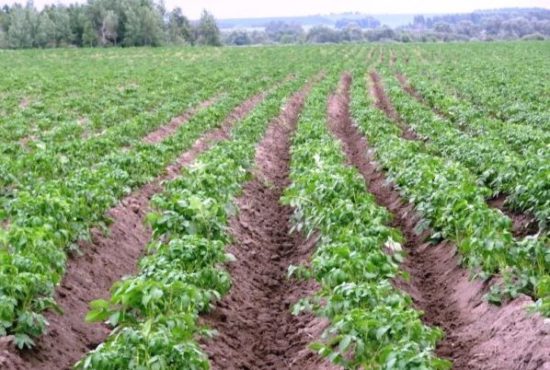
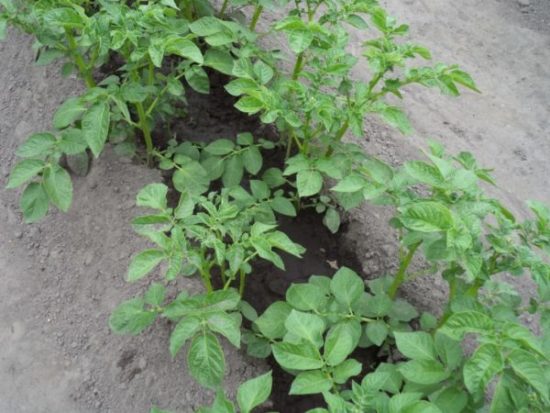
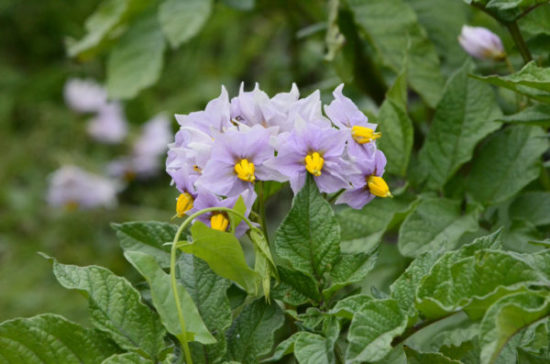
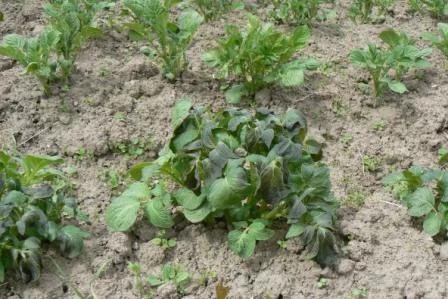
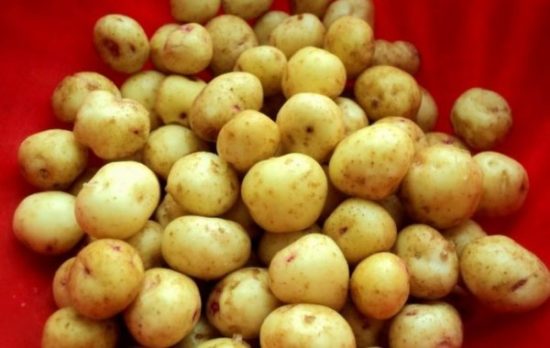

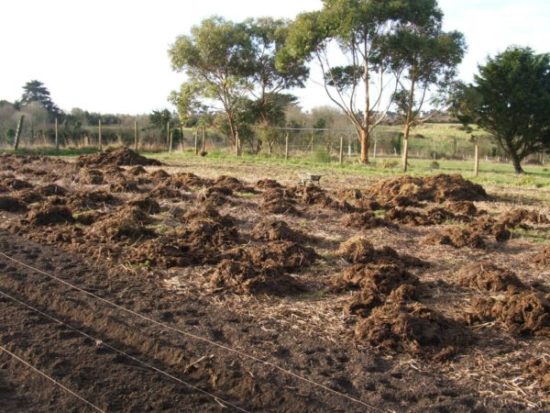
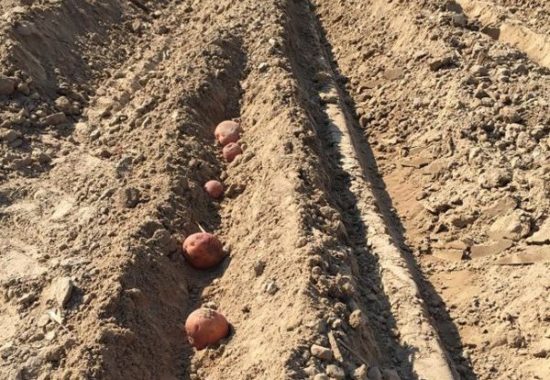
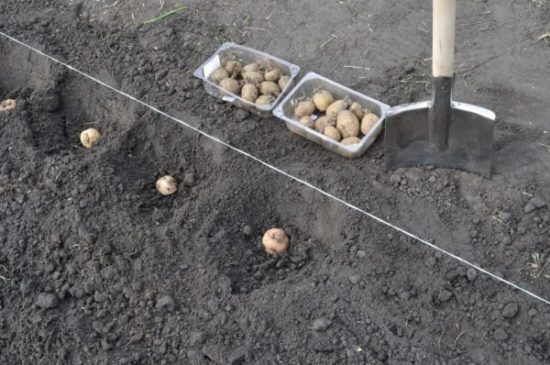
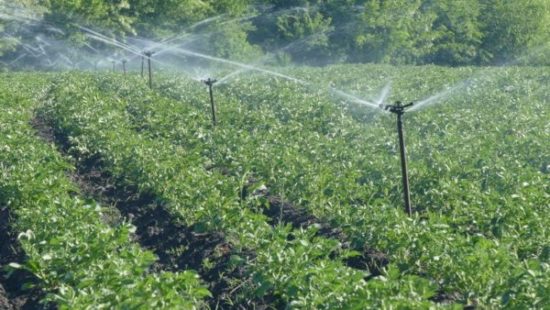
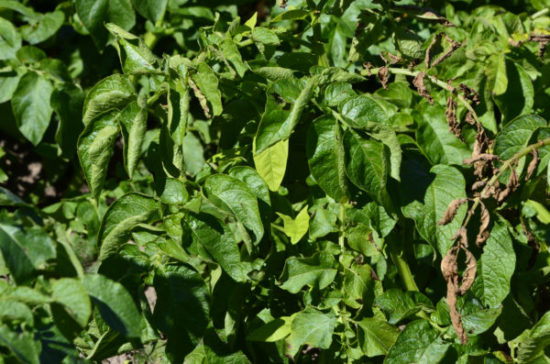
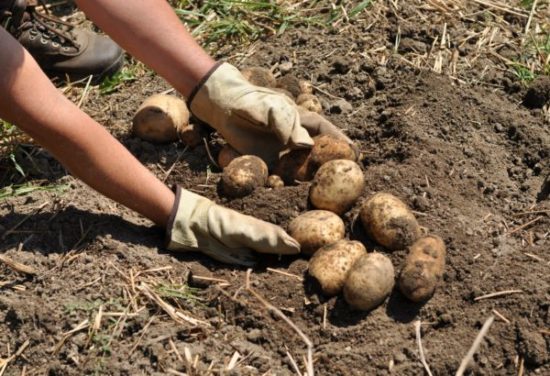
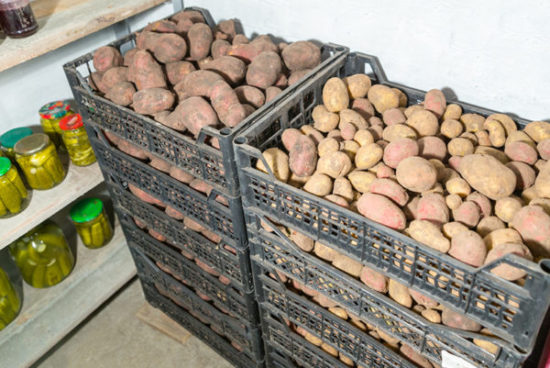

 CUCUMBERS NEVER GET SICK, I'VE BEEN USING ONLY THIS FOR 40 YEARS! I SHARE A SECRET WITH YOU, CUCUMBERS ARE LIKE THE PICTURE!
CUCUMBERS NEVER GET SICK, I'VE BEEN USING ONLY THIS FOR 40 YEARS! I SHARE A SECRET WITH YOU, CUCUMBERS ARE LIKE THE PICTURE! You can dig a bucket of potatoes from each bush.Do you think these are fairy tales? Watch the video
You can dig a bucket of potatoes from each bush.Do you think these are fairy tales? Watch the video
 How our fellow gardeners work in Korea. There is a lot to learn and just fun to watch.
How our fellow gardeners work in Korea. There is a lot to learn and just fun to watch. Eye trainer. The author claims that with daily viewing, vision is restored. They don't charge money for views.
Eye trainer. The author claims that with daily viewing, vision is restored. They don't charge money for views. A 3-ingredient cake recipe in 30 minutes is better than Napoleon. Simple and very tasty.
A 3-ingredient cake recipe in 30 minutes is better than Napoleon. Simple and very tasty. Therapeutic exercises for cervical osteochondrosis. A complete set of exercises.
Therapeutic exercises for cervical osteochondrosis. A complete set of exercises. Which indoor plants match your zodiac sign?
Which indoor plants match your zodiac sign? What about them? Excursion to German dachas.
What about them? Excursion to German dachas.